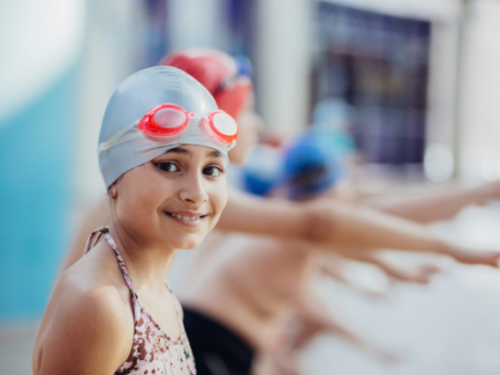Safety in Swimming Pools
Prevention & Vigilance: 2 key safety measures for your family swimming pool
The swimming pool is the safest place to learn to swim
The swimming pool is the best possible place to learn to swim as it combines all of
the most favourable conditions to take to the water for the first time: no waves, no current
and clear water that is sometimes heated. However, the learning process must be supervised
by an adult who must be vigilant at all times. Regardless of the protection systems in place
and the type of water concerned, a responsible adult is the more able to ensure the safety
of children through the vigilance employed in supervising them, the protective equipment
they provide for them, allowing them to learn to swim early and teaching them safety tips.
Swimming pool safety: law and common-sense
If correctly installed and used, safety features are a very useful addition to adult supervision.
Consumers must choose a system according to their needs, including family structure, type
of pool, usage, main residence or holiday home, etc.
The law makes provision for 4 safety features :
- Safety fences, pool covers and lining physically prevent access to the pool and
are particularly suited to young children if they are closed or put back in position after
swimming. - Pool alarms can alert you to a child falling into the pool (immersion alarm) or
getting within a certain distance of the edge (perimeter alarm), but do not prevent drowning. - The FPP stresses that most accidents occur in the absence of protection systems and around
half occur while swimming, while all of the systems have been breached or disabled. - Protection systems are only a complement to adult supervision. Installing such systems
does not strip consumers of their responsibilities to supervise children or use protection
systems. For example, secure ladders are required for above-ground pools, whether filled,
foldable or moulded.
Seek advice from a professional member of the FPP: All FPP members work closely in the field of prevention with public authorities. In order
to choose the right protection system, consult a professional, who will be able to take you
through the range of different systems available. Find more information on our website
www.propiscines.fr
Habits to adopt with children
- Only swim when there is an adult present
- When they are playing in or near the water, children must always be closely supervised by a designated adult who is responsible for their safety.
- Provide children with adjusted armbands
- If children cannot swim, provide them with armbands (bearing the CE mark and NF 13138-1 standard) appropriate for their height, weight age, and teach them to swim as soon as possible.
- Have a pole, a lifebuoy and a telephone close by
- If there are any problems, you will need to react quickly and effectively. This requires having a pole and a lifebuoy near the pool and also having
a telephone to dial 112 in an emergency. You must also learn life-saving skills: emergency first aid training will help you keep a person alive until more professional help arrives. To take the Certificate of Training in First Aid (AFPS) you should register with an approved AFPS-awarding association and follow a training course validated by the joint order issued on 29th June 2001 by the French Minister of the Interior, who is in charge of civil security, and the French Minister of Health.
- If there are any problems, you will need to react quickly and effectively. This requires having a pole and a lifebuoy near the pool and also having
- Do not leave toys in the pool after it has been vacated
- Remember to remove all floating objects, toys, buoys and inflatable objects from the pool and putting the safety equipment back.
- Keep water treatment products out of the reach of children
- Chemicals are required to maintain high levels of water hygiene. Complying with these guidelines will maximise the safety of your pool.
Store your products separately in their original containers, upright and always with the caps securely fastened. Store them in a dry, well-ventilated place out of the reach of children to prevent any accidents.
- Chemicals are required to maintain high levels of water hygiene. Complying with these guidelines will maximise the safety of your pool.
A Legal Requirement
Protect your pool with safety measures
The law requires all in-ground or sunken pools to be installed with at least one safety measure (alarm, cover, fence or lining). Never forget to put them back into position after
the pool has been vacated. It is important to provide secure access (ladder or steps) for above-ground pools (NF P90-317 standard governing means of access for residential swimming pools). The interior ladder must be secured (foldable or moulded), but please be present at all times. Special covers, which adhere to swimming pool security standards, are also available for above-ground pools to secure them after swimming.
Use this handy documentation with information regarding good practice and habits to adopt with children : Safe swimming in pools

